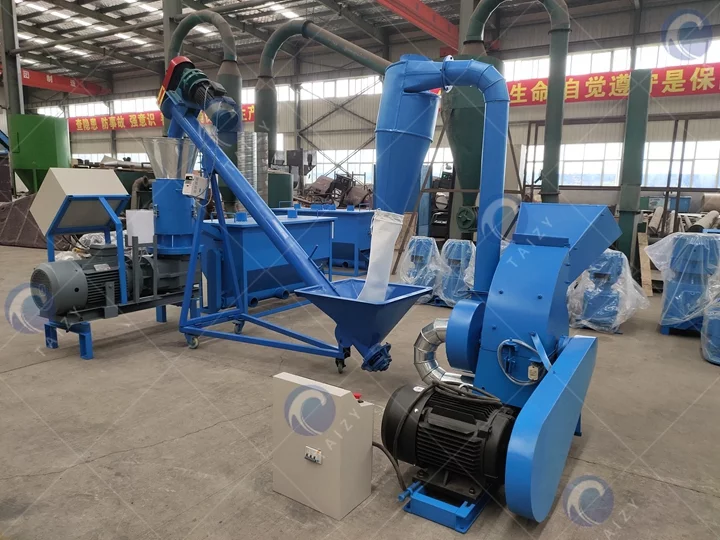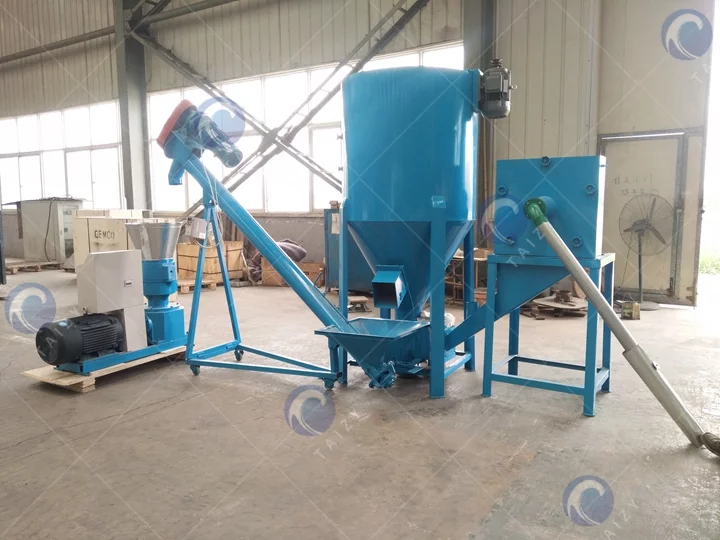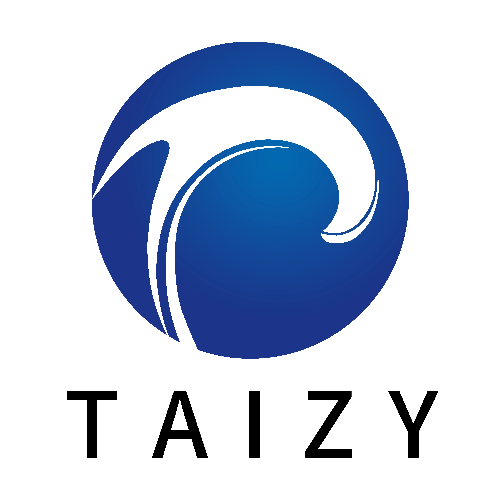Feed pellet production line exported to Indonesia
In the vibrant agricultural landscape of Indonesia, a forward-thinking livestock farmer, Mr. Agung, faced the challenge of ensuring consistent and high-quality nutrition for his diverse range of animals.
Recognizing the need for a reliable and efficient solution, Mr. Agung decided to invest in an Animal Feed Pellet Production Line.

Challenges
Mr. Agung’s farm, located in Central Java, had been relying on external suppliers for feed, leading to inconsistencies in quality, fluctuating prices, and occasional disruptions in supply chains.
The need for specialized nutrition for different species and life stages of his livestock was also a concern.
Solution
After thorough research, Mr. Agung invested in our Animal Feed Pellet Production Line. The mechanized system provided a comprehensive solution to his challenges:

- Improved Feed Quality: The production line ensured the production of nutritionally balanced pellets, promoting healthier and more productive livestock.
- Customization and Flexibility: Mr. Agung could easily tailor feed formulations to meet the specific nutritional requirements of different animals, optimizing their growth and performance.
- Cost-Effectiveness: In-house production reduced long-term costs by allowing bulk purchasing of raw materials and minimizing dependency on external suppliers.
- Reduced Feed Waste: By producing on-site, Mr. Agung could control the quantity and quality of feed, minimizing waste and promoting sustainability.
- Hygiene and Safety Standards: The dedicated production line adhered to strict hygiene and safety standards, ensuring feed free from contaminants and promoting animal health.
Results
The implementation of the Animal Feed Pellet Production Line yielded significant benefits for Mr. Agung’s farm:
- Increased Livestock Productivity: Livestock exhibited improved growth rates, higher milk and egg production, and overall better performance.
- Cost Savings: In-house production proved cost-effective in the long run, providing financial stability and reducing vulnerability to market fluctuations.
- Market Opportunities: Mr. Agung explored opportunities to supply neighboring farms, creating additional income streams and contributing to the local agricultural economy.
- Adaptability to Specific Needs: The production line’s flexibility allowed easy adjustment of feed formulations, catering to the diverse nutritional needs of different animal species.

Conclusion
The successful implementation of the Animal Feed Pellet Production Line not only addressed Mr. Agung’s immediate challenges but positioned his farm for sustainable growth.
The farm now stands as a testament to the transformative impact of investing in modern, automated solutions for livestock nutrition in the heart of Indonesia’s agricultural sector.
